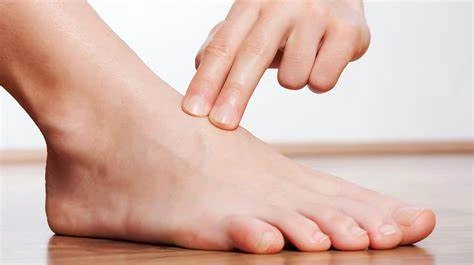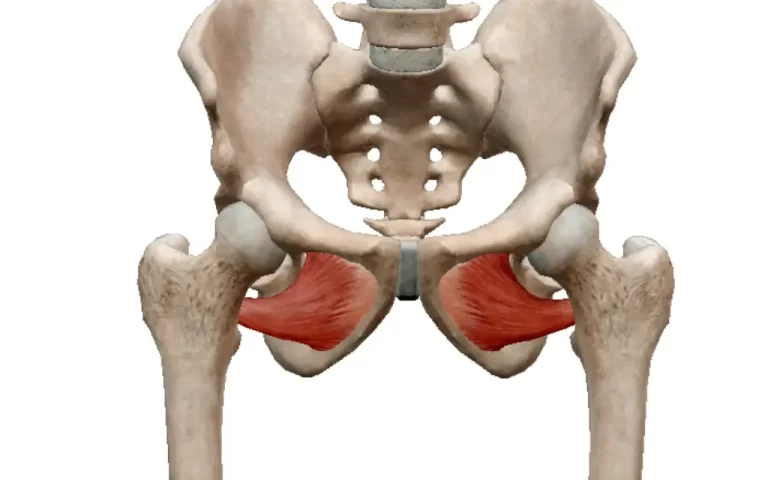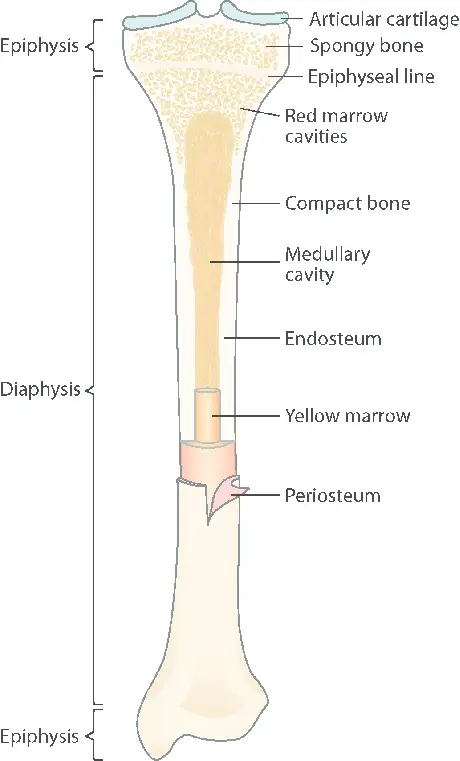Pulse at the Ankle
We all know to check familiar health metrics like weight, blood pressure, and temperature. But one simple self-assessment many overlook is feeling for the pulse at the ankle. It offers a surprisingly insightful window into the state of circulation in your lower legs and feet. Here’s what feeling that telltale rhythm can reveal.
What is Pulse?
Pulse refers to the rhythmic throbbing sensation palpable over peripheral arteries with each surge of blood flow from heart contractions. Key characteristics include rate, rhythm, and strength, offering insight into circulatory status.
Normal pulse rates range from 60-100 beats per minute (BPM) in adults. Rates under 60 BPM signify bradycardia and over 100 BPM tachycardia. Rhythm should follow regular intervals, with irregularity indicating potential heart arrhythmias. Strength corresponds to cardiac output force – bounding pulses suggest hypertension while weak, faint pulses often mean poor perfusion.
Many factors like age, temperature, medications, pain, and emotional state can impact pulse rate and strength. Assessing pulse requires locating pulse points – areas where arteries lie close enough to the skin to feel each heartbeat’s expansion wave.
Why Check Your Ankle Pulse?
Checking your ankle pulse provides a window into circulation and blood flow into your feet and legs. The characteristics of the pulses can flag developing problems like peripheral artery disease, diabetes complications, blood clots, varicose veins, or aneurysms before other overt symptoms appear. Catching these circulatory issues early allows for quicker treatment.
It’s also important to monitor your ankle pulses over time. A gradual decline in the strength of pulses or asymmetry between the left and right sides can reveal progressive vascular disease. People over 50 or those with diabetes, high cholesterol, or a history of smoking should check their pulse regularly.
How to Check Pulse at the Ankle
Finding the pulses takes a bit of focused practice. Apply firm but gentle fingertip pressure to the soft spaces behind and below the inner ankle bone until the subtle beat emerges. A lighter touch suffices to feel the top of the foot pulse.
Methodically check rate, rhythm between sides, and any changes from your norm over routine checks. Irregularities or reduced sensation should prompt medical attention for further diagnostic assessment.
To check the pulse at your ankle, you need to find the posterior tibial artery. Here are the steps to follow:
- Cross one leg over the other while sitting up. You should be able to reach the inner of the crossed leg’s foot in your lap.
- Feel the prominent ankle bone that protrudes on the inside of your ankle, the medial malleolus.
- You can feel the pulse of the posterior tibial artery by pressing your thumb against the tissue directly behind the medial malleolus.
- When checking, compare left and right ankles for symmetry.
Locating the pulses takes a bit of practice. Use two fingertips to gently press over these areas until you feel the pulse:
- Posterior Tibial Pulse: Press into soft tissue below and behind the medial malleolus (inner ankle bone).
- Dorsalis Pedis Pulse: Press along the top center of the foot near the first metatarsal bone.
You can also use a stethoscope or a Doppler device to listen to the pulse 234. This can help you measure the blood pressure in your ankle or the ankle-brachial index, which is a test for peripheral artery disease.
Don’t Ignore Ankle Pulses! Monitoring them provides meaningful circulatory health insight. Make checking ankle pulses part of your routine.
The 9 Pulse Points
9 common pulse points can be assessed:
A pulse point refers to a region where an artery is near the skin, enabling one to perceive the flow of blood using one’s fingers. The pulse serves as a source of valuable information about the heart rate, rhythm, strength, and contour of the blood pressure.
The temporal pulse: The temporal pulse can be felt by pressing the skin above the zygomatic arch with the index and middle fingers.
Carotid pulse: Carotid pulse is found on the cervical region, near the mandibular angle, and adjacent to the trachea. It serves a dual purpose in the evaluation of cerebral blood flow and the examination of craniofacial structures.
Apical pulse: The apical pulse can be detected by placing the palm on the chest, slightly below the nipple, and allows for the evaluation of the heart rate, rhythm, and sounds.
Brachial pulse: The brachial pulse is an anatomical feature situated in the proximal region of the upper extremity, near the articulation of the humerus and the forearm. It is utilized for the measurement of arterial pressure.
Radial pulse: The radial pulse is an anatomical feature situated in the proximal region of the upper extremity, near the articulation of the humerus and the forearm. It is used to measure arterial pressure.
Femoral pulse: The femoral pulse can be discerned by applying digital pressure to the dermal surface between the pubic bone and the inguinal ligament. It serves as a valuable tool in evaluating the circulation within the lower extremities and the foot.
Popliteal pulse: Popliteal pulse: The popliteal pulse is an anatomical structure situated posteriorly to the knee, and it serves as a valuable location for the assessment of the ankle-brachial index.
Posterior tibial pulse: The posterior tibial pulse is situated in the inner region of the ankle, directly posterior and inferior to the medial malleolus. It is used to evaluate the blood circulation to the foot and toes.
Dorsalis pedis pulse: The dorsalis pedis pulse is palpable at the superior aspect of the foot, near the origin of the hallux, and serves as a valuable means of evaluating the circulatory status of the foot and its respective digits.
Summary
Checking the pulse at your ankle via the posterior tibial and dorsalis pedis arteries is an important part of monitoring lower body circulatory health. Along with other pulse points like radial, carotid, and brachial pulses, the ankle pulse provides a window into the blood flow and can flag issues like peripheral artery disease early when treatment is most effective.
Factors like age, chronic illnesses, and lifestyle warrant routine pulse checks to establish a baseline and notice any declines over time. While finding the pulses takes practice, this simple self-check offers vital insight into vascular status in the limbs.
Make it a point to periodically monitor your ankle pulses, comparing bilateral symmetry and strength. Don’t ignore these crucial gatekeepers of foot and leg circulation – detect problems early by incorporating ankle pulse checks into your health regimen!
FAQs
Which ankle pulse points should I check?
The two main ankle pulse points are the posterior tibial pulse (behind the inner ankle) and the dorsalis pedis pulse (on top of the foot).
How often should I check my ankle pulses?
Check your ankle pulses as part of your routine health self-checks every month or so. Those over 50 or with medical conditions should check more frequently for any changes.
What’s a normal ankle pulse reading?
A normal ankle pulse feels strong, steady, and regular when palpated gently with fingertips. The rate should match your overall heart rate between 60-100 beats per minute.
If I can’t feel my ankle pulse well, does that mean I have poor circulation?
Difficulty feeling the ankle pulse could indicate poor circulation, but it also takes practice to locate correctly. Use light palpation first. Consider asking your doctor for an evaluation if the pulses seem consistently faint or absent.
What should I do if there’s a difference in pulses between my left and right ankles?
Asymmetry in pulse strength between sides, continuously weaker pulse on one side, or declining pulse strength over time on repeat checks warrants making an appointment with your doctor for evaluation.
Can feeling my pulse help detect health issues like heart disease?
Yes! Changes felt in both ankle pulses and other central pulse points can provide early clues to developing vascular diseases. This allows conditions like peripheral artery disease, blood clots, or irregular heart rhythms to be caught early.
References
- Msn, A. L. (2023, March 7). Pulse Points And How To Find Them | NurseTogether. NurseTogether. https://www.nursetogether.com/pulse-points/
- Ummu, M. B. C. (n.d.). 9 Common pulse points – (Anatomical pulse sites with demonstration). Nurseship.com. https://nurseship.com/pulse-points-common-pulse-sites-normal-pulse-rate/







